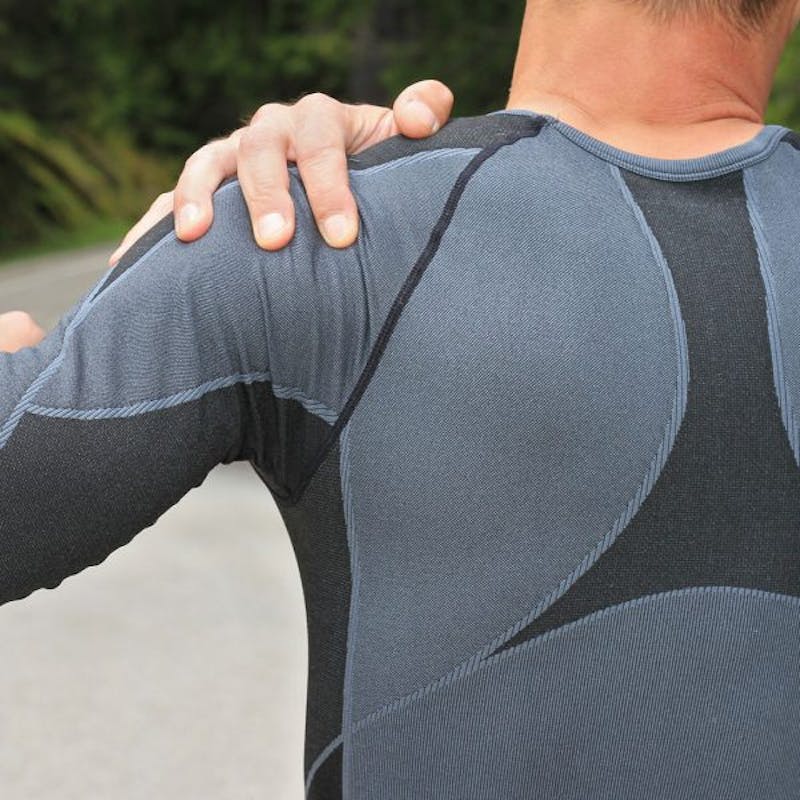
Schedule A Consultation
healing your body for the long run
Contact Us
Rotator cuff tears affect a large number of people with various activity levels, and here at Seattle Regenerative Medicine Center see a considerable amount of patients a week who experience shoulder pain. The tendons in the shoulder can be injured in a variety of ways, and damage to them can cause pain, discomfort and limited range of motion. Tendons have very limited blood flow, so they are not able to repair themselves very effectively or efficiently. This often results in a healed tissue that is weaker and less functional than the original tissue.
“In the past, rotator cuff tears have been repaired by either surgical procedures or steroid injections to reduce swelling and inflammation. However, new regenerative medicine methods are becoming more effective and increasingly popular treatment options. Two of the main techniques being used are platelet-rich plasma therapy (PRP) and mesenchymal stem cell (MSC) therapy.” Dr. Lucy Hostetter.
What is the Rotator Cuff?
This part of the shoulder is made up of four different muscles: the supraspinatus, the infraspinatus, the teres minor and the subscapularis. Each of these muscles connects to the humerus, or upper arm, bone, and they are connected via tendons, which are responsible for connecting muscle to bone.
One of the most common ways the shoulder is injured is from falls in skiing, biking, or other sports. These tears can also occur if the tendon tissue becomes worn down over time after rubbing against bone spurs that form on the bones in the shoulder joint. When the tendons in the shoulder are damaged, it can make it painful to perform certain movements, such as reaching backwards, reaching upwards, or rolling onto the damaged shoulder.
What Regenerative Medicine Techniques Are Available?
There are two main therapy techniques that are growing in popularity. The first of these is platelet rich plasma, which is known as PRP. This therapy involves inserting a person’s own blood plasma directly into the damaged tissue. The plasma used in this treatment is derived from a blood sample that is centrifuged to separate the various components.
PRP is packed full of platelets and growth factors, which are responsible for regenerating cells. These platelets can aid in the creation of new cartilage, fiber, and collagen cells, and they can also grow new blood vessels in tissues, which can help to encourage proper healing.
The second regenerative therapy uses mesenchymal stem cells. These cells are generated from a person’s bone marrow, and are often extracted from the hipbone. The process is minimally invasive and is associated with very little pain. The stem cells are then isolated using centrifuging.
These mesenchymal stem cells are known as multi-potent cells, meaning that they can change into various other types of cells, most notably chondrocytes, which are responsible for creating new cartilage tissue, and cells that create new tendons and connective tissue.
How Do These Therapies Work?
Both of these therapy options work in similar ways by improving the ability of cells to regenerate and increasing blood flow to the affected area. PRP works by bringing extra platelets to help speed up the healing process, and stem cell therapy works by bringing in cells that can turn into the tissue that needs to be repaired.
Both of these treatments are able to reduce recovery time substantially compared to the normal healing process. They do this in many ways, and one of them is by encouraging the growth of new blood vessels. Because tendons don’t have high vascularity, they are not able to heal effectively. These treatments promote new capillary formation, helping to make the healing process more efficient.
Regenerative therapies also speed up recovery by reducing inflammation. Inflammation is an important part of the healing process, as it brings growth factors and other cells to the area to begin the healing process. However, inflammation can also result in tenderness, pain, swelling, and reduced joint function, especially if it is chronic.
In addition, when tissue heals, it usually produces scar tissue. Scar tissue formation increases even more with constant inflammation. Scar tissue is made up of connective tissue, and it doesn’t have the same strength, flexibility, or overall functionality as the original tissue. Regenerative medicine helps to reduce chronic inflammation, reducing the amount of scar tissue formation and helping to restore total functionality to the affected tendons.
Plasma and stem cell treatments are also more effective than surgical options, especially for partial rotator cuff tears. These therapy options are minimally invasive, whereas surgical procedures involve more tissue irritation, longer recovery times, and increased rehabilitation. They also require patients to be put to sleep with anesthesia, making the procedure itself much longer.
Regenerative therapies show promise in the field of tendon repair, especially when it comes to the shoulder. Injuries to this area are very common, and plasma and stem cell therapies provide a minimally invasive, safe, and effective option compared to the surgical procedures normally used to repair tendon damage. If you want to know how we can help you, call us at 425-454-0406.